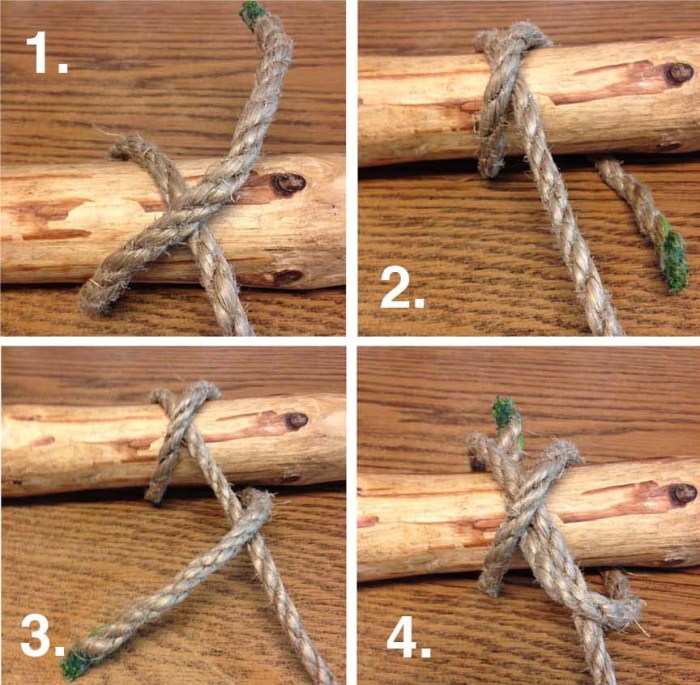Emergency preparedness drills for scouts – Emergency preparedness drills are crucial for Scouts, equipping them with vital skills and knowledge to navigate unforeseen situations. These drills simulate real-life scenarios, fostering essential life skills that empower Scouts to respond effectively to emergencies.
From wilderness survival to first aid emergencies, these drills provide a safe and controlled environment for Scouts to practice their skills, building confidence and competence in handling challenging situations.
Importance of Emergency Preparedness Drills for Scouts

Conducting emergency preparedness drills for scouts is essential in equipping them with the necessary skills and knowledge to respond effectively to unforeseen situations. These drills provide a safe and controlled environment for scouts to practice their emergency response plans and develop essential life-saving skills.
Emergency preparedness drills help scouts develop critical thinking, problem-solving, and decision-making abilities. They learn to assess risks, prioritize tasks, and communicate effectively in high-stress situations. By simulating real-life emergencies, drills allow scouts to gain hands-on experience in handling various scenarios, such as natural disasters, medical emergencies, and lost person situations.
Benefits of Emergency Preparedness Drills for Scouts
- Enhanced safety awareness and risk assessment skills
- Improved problem-solving and decision-making abilities
- Development of practical life-saving skills
- Increased confidence and self-reliance in emergency situations
- Foster teamwork and communication among scouts
Numerous real-life examples demonstrate the value of emergency preparedness drills for scouts. During the 2011 Tohoku earthquake and tsunami in Japan, scouts who had participated in regular drills were able to evacuate safely and assist their communities in recovery efforts.
Similarly, in the aftermath of Hurricane Katrina in 2005, scouts played a vital role in providing aid and support to affected areas, thanks to their training and preparedness.
Types of Emergency Preparedness Drills

Emergency preparedness drills are crucial for scouts to develop the skills and knowledge necessary to respond effectively to various emergencies. Different types of drills serve specific purposes and objectives, catering to the unique needs and capabilities of each scout group.
Tailoring drills to the specific needs of the scout group ensures that the training is relevant and applicable to the potential hazards they may encounter in their local environment.
Types of Drills
- Fire Drills:Practice evacuating buildings or campsites safely and efficiently in the event of a fire. Drills should include identifying escape routes, reporting the fire, and practicing fire extinguisher use.
- Shelter-in-Place Drills:Teach scouts how to stay safe indoors during severe weather events or other emergencies that require them to remain inside a building or shelter.
- Evacuation Drills:Simulate evacuating a larger area, such as a campsite or hiking trail, in the event of a natural disaster or other emergency.
- First Aid Drills:Provide practical experience in administering first aid to injured or sick individuals. Drills should cover basic first aid techniques, such as CPR, wound care, and splinting.
- Communication Drills:Practice using different methods of communication, such as radios, cell phones, and hand signals, to maintain contact and relay information during emergencies.
- Emergency Kit Drills:Familiarize scouts with the contents and proper use of emergency kits. Drills should include assembling and using items such as food, water, shelter, and first aid supplies.
Planning and Conducting Emergency Preparedness Drills: Emergency Preparedness Drills For Scouts

To ensure the effectiveness of emergency preparedness drills for scouts, proper planning and execution are crucial. Here’s a comprehensive guide for scout leaders to plan and conduct drills:
Before conducting a drill, it’s essential to define the objectives, select a suitable location, and establish realistic scenarios. Consider the specific hazards and risks in your area and tailor the drills accordingly.
Selecting a Drill Location
Choose a location that provides a safe and controlled environment for the drill. Consider factors such as accessibility, visibility, and space for participants to practice various emergency procedures.
Setting Up Scenarios
Develop realistic scenarios that simulate potential emergencies scouts may encounter. These scenarios should challenge participants and test their ability to respond effectively. Incorporate different levels of complexity and difficulty to enhance learning.
Evaluating the Effectiveness of the Drills
After each drill, evaluate its effectiveness by observing participants’ performance, assessing their knowledge, and identifying areas for improvement. Use this feedback to refine future drills and ensure they meet the desired objectives.
Ensuring Safety and Well-being
Prioritize the safety and well-being of participants throughout the drills. Ensure proper supervision, provide clear instructions, and establish safety protocols. Conduct drills in a controlled environment and monitor participants closely to prevent injuries or accidents.
Evaluating and Improving Emergency Preparedness Drills

To enhance the effectiveness of emergency preparedness drills, it is essential to conduct thorough evaluations to identify areas for improvement. This allows organizations to refine and enhance future drills, ensuring they are tailored to specific needs and objectives.
Collecting feedback from participants and observers is crucial for evaluation. This can be done through surveys, interviews, or debriefing sessions. Feedback should focus on the drill’s objectives, realism, effectiveness, and areas for improvement.
Using Evaluation Results, Emergency preparedness drills for scouts
- Identify Strengths and Weaknesses:Evaluation results provide valuable insights into the strengths and weaknesses of the drill, allowing organizations to focus on enhancing weaker areas.
- Refine Objectives:Based on feedback, organizations can refine the objectives of future drills to ensure they align with specific needs and priorities.
- Improve Realism:Evaluation results can help identify ways to enhance the realism of drills, making them more effective in preparing participants for real-world emergencies.
- Enhance Effectiveness:By addressing areas for improvement identified through evaluation, organizations can enhance the overall effectiveness of their emergency preparedness drills.
Integrating Emergency Preparedness Drills into Scout Activities

Incorporating emergency preparedness drills into regular scout activities is crucial for developing scouts’ skills and confidence in handling emergencies. By making drills fun and engaging, scouts can learn essential safety measures while having an enjoyable experience.
One way to integrate drills is to create scenarios that simulate real-life emergencies. For example, conduct a fire safety drill by setting up a mock campfire and having scouts practice extinguishing it using water or a fire extinguisher. Another option is to organize a first aid drill where scouts learn how to treat minor injuries and apply bandages.
Gamifying Drills
To make drills more engaging, consider gamifying them. Award points for correct responses, teamwork, and quick thinking. Use a scoring system to track progress and encourage friendly competition. This approach adds an element of excitement and motivation, making drills more enjoyable for scouts.
Ongoing Training
Regular and ongoing preparedness training is essential for scouts to retain knowledge and skills. By incorporating drills into every scout meeting or activity, scouts can consistently practice and improve their emergency response capabilities. This ongoing training helps build muscle memory and ensures that scouts are well-prepared for any situation.
Final Summary

Incorporating emergency preparedness drills into Scout activities is not only essential for their safety but also fosters a culture of preparedness and resilience. By integrating these drills into regular activities, Scouts develop a deep understanding of emergency protocols, enhancing their ability to protect themselves and others in times of need.
Clarifying Questions
Why are emergency preparedness drills important for Scouts?
Drills provide a controlled environment for Scouts to practice essential skills, building confidence and competence in handling emergencies.
What types of emergency preparedness drills are there?
Drills can range from wilderness survival scenarios to first aid emergencies, tailored to the specific needs and capabilities of the Scout group.
How can I plan and conduct an emergency preparedness drill?
Planning involves selecting a drill location, setting up scenarios, and ensuring participant safety. Conduct the drill by simulating real-life emergencies and evaluating effectiveness.





